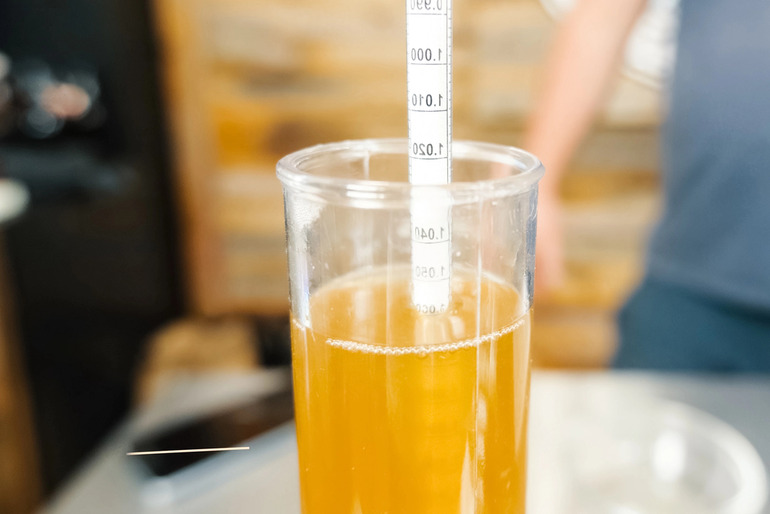Designing the perfect homebrew lager for soccer match day is both a science and an art—balancing sensory chemistry, brewing precision, and the real-world demands of fans enjoying hours of game-time excitement. This is about creating a crisp, light-bodied beer that matches the energy of a tailgate, the atmosphere of a pub, and the thrill of being pitch-side. Each technical decision to be made, be it bitterness and carbonic acid content or head retention and alcohol content, is directly measurable in its effect on the quality of drinkability, flavor, and general pleasure. Knowing these variables is critical for homebrewers to adjust the parameters of their process, professional brewers to tweak a core style, or minor ingredient suppliers to refine their offerings.
Next, we will consider each of the factors involved in brewing and how each influences a lager that has been uniquely created to suit the match day, as well as the quality standards of brewers and beer lovers worldwide. Producing that classic match-day lager flavor begins with knowledge of the molecules that give it its classic clean flavor. Research by Lallemand Brewing and Wikipedia highlights a balance of flavours in that malt sweetness is balanced with a modest hop bite. When this is achieved, there should be a balanced malty aroma that is uplifted by light fruity esters and supported by a front-end gentle bitterness. The desired bitterness is at the following position: IBU 24 44, which is enough to make the beer crisp and refreshing without tiring the palate to be tired.
Carbonation Level (CO₂)
The bubbles of carbonation are not just an accessory to the drinking experience; it is an essential part of the structure. Surveys by Amigo del Cervecero and WordPress brewing communities suggest that ~2.2-2.5 volumes of CO 2 may be an optimal range for lagers during activities involving high energy discharge, such as soccer events. The degree of carbonation is palate-stimulating, which allows aromas to lift up in the glass as well as offering a refreshing, tingly mouthfeel. It maintains that every drop is refreshing, and that is essential in a bar where the beer should always be found in places like the sports stadium, where the temperature changes frequently and the flow of talk is always diverse.
Looks & Keeping Hair
The eyes of fans drink first, and the pale straw to light gold color range (SRM = 4 to 6) satisfies their sight with that familiar look of lager. The sources on Wikipedia, Food & Wine, and brewing show that the use of a tight and persistent microfoam head is important. This foam serves not just to indicate freshness, but it also locks in aromatics, so the subtle esters and hop aromas in a beer do not evaporate immediately. A foam layer also serves this purpose in a stadium or pub, acting as a protective barrier to the aroma of any drink so that the initial taste is as intense as the last one.
Competitions in soccer, particularly in tournaments, may last hours, and with pre- and post-game hype, a soccer match may last longer. Most brewer advocates, such as Blog de Vinos y Cerveza, suggest 4 to 5 percent ABV as ideal for sessionability. This sweet spot, as seen by homebrewers, is the production of a beer that has just enough character to remain interesting beer after beer, and also stays drinkable throughout a match or two. It inherits the Czech and American tradition of a reasonably balanced, refreshing, and social pale lager, elements that are appealing to the informal follower, sports fanatic, and brewmaster.
Analytical Checks
Brewing for match-day demand requires more than good recipes; it demands analytical rigor. Breweries use GC-MS (Gas Chromatography–Mass Spectrometry), spectrophotometry, and structured sensory testing to ensure each batch matches exact targets for bitterness, aroma, color, and clarity. According to Food & Wine, Oxford Academic, and ResearchGate sources, this data-driven approach guarantees that fans receive the same quality pint whether they’re at an early-season friendly or a championship final. It’s also the perfect backdrop for friendly betting predictions, with fans swapping insights and debating outcomes between sips, the consistently crafted beer keeping the focus on camaraderie, banter, and the match itself.
Flavoromics, mapping the chemical blueprint of taste, has been a game-changer in brewing science. Foods 2025 and MDPI research teams have pinpointed the compounds that create Lager’s smooth drinkability. By identifying esters, aldehydes, and hop-derived compounds in precise ratios, brewers can design beers that taste great at fridge temperature and remain appealing as they warm in the hand during a lively second half.
Carbonation Specialists
Brewing forums like WordPress and Brew and Beyond emphasize CO₂’s ability to act as a delivery vehicle for aroma and flavor in fast-paced, social drinking settings. In the chaos of a packed fan zone, carbonation not only refreshes but also ensures the beer’s character survives amidst the aromas of stadium food, nearby grills, and outdoor air.
For large fan events, reliability is everything. Oxford Academic and SpringerLink profiles on brewing quality-control highlight how seasoned brewers and Ombers teams run sensory panels weekly. These panels do not just score beer—they compare it to the previous batch, ensuring the same hop brightness, malt sweetness, and carbonation are delivered without deviation. This keeps fans returning pint after pint, trusting the taste will match their memory.
Public Perception: Homebrewers & Fans
Whether it is homebrew forums or ballpark polls, I see one term repeated many times: sessionable. Fans appreciate beers that they are able to drink without palate fatigue, beers that can be consumed with ease with salty snacks, grilled meat, and a rollercoaster of emotions that come along with soccer. Some bitterness, low-to-medium carbonation, and a goal-scoring malt-hop proportion are present in the offerings, which fit sinfully well, regardless of the scoreboard (3-0 or 0-0 ad time).
Bitter science (IBU ~24-44), carbonation (~2.2-2.5 volumes CO 2), color (SRM ~4-6), and alcohol volume (4-5 percent ABV) create a strict recipe for creating the perfect match-day lager. Provided they are determined through analytical testing and sensory panels confirm these measurements, they provide a reliable blueprint that can be applied both to homebrewers and professional brewers. What comes out is a beer that not only technically works, in having lean-flavored, balanced bitter, and stable head, but also accelerates the shared spirit of soccer celebrations. Whether it is the initial toast before kickoff to the final toast after the final whistle, its success is due to being brewed with that precision of brewing, coupled with social meaning.








